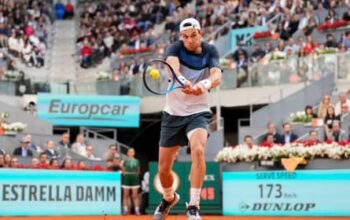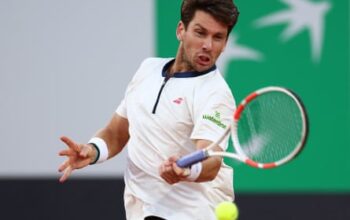As Stefanos Tsitsipas debriefed on his second-round loss at the Madrid Open last month, his regret was plain to see. The Greek explained that his goal had been to earn as close to 6,000 ATP ranking points as possible during the clay-court season, which he had calculated as the maximum amount he could gain during this period, in a perfect world. Now he was behind.
“Now I am maybe a step back from even achieving that, so minus 1,000,” he said. “I just have to keep on working for the points, because I really want to get out on the court to fight for the points that I feel belong to me, and reach new heights in terms of my ranking and my performance this season.”
One of the peculiarities of professional tennis is the importance of the rankings. They determine everything from the tournaments that a player can enter to the amount of money a sponsorship contract might pay out. Their most basic function, though, is to measure each player in relation to their peers. “Those numbers don’t lie,” says Tsitsipas, the world No 9. “They say everything.”
Despite how essential the rankings are to the sport’s functioning, Tsitsipas’s approach is unusual. Very few players speak so openly about points and positions, for while setting objective goals can be a positive source of motivation, that number next to a player’s name can quickly become their worst nightmare.
“Injury, draws, there’s a lot of things in tennis which you don’t have control over,” says Britain’s Jack Draper. “It’s tough to sort of put [a target] on and then be very disappointed. If you’re focusing on trying to: ‘Get to this ranking, get to this ranking,’ then you stop developing as a player. You’re not gonna get to that point.”
Many players have had to learn this the hard way. “Having those outcome goals was almost debilitating for me,” says Madison Keys. “I put way too much pressure on myself and I honestly hated being out playing tennis just because I couldn’t focus on why I was actually out there and what I was actually trying to do. So I really tried to make a conscious effort to have a lot more performance-based goals and focus a lot more on how I’m playing, how I want to play.”
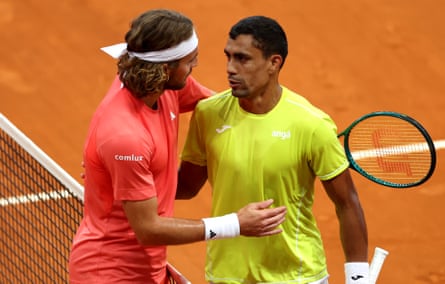
Since their introductions in 1973 and 1975 respectively, the ATP and WTA rankings have played a pivotal role in the development of the sport. Both ranking systems adopt a rolling 52-weeks system and each tournament category offers a certain number of points each round according to their importance. The four grand slam tournaments boast the highest amount of points. Those who are unable to match the points they accrued a year earlier will fall in the rankings.
In the digital age, ignoring the rankings is even more difficult than before. Players used to learn of their new rankings only each Monday, but the rise of “live rankings” , initially calculated by fans, have transformed the experience of playing and following tennis, allowing players and fans alike to chart progress round by round.
Although Keys has managed to avoid following her live ranking, the temptation has always been there. “It can become so easy to get wrapped up into it,” she says. “And I think playing from such a young age, it’s hard because that number next to your name can mean so much and it really takes the fun out of tennis. You just start focusing on that so much, but it doesn’t really matter.”
In the opening week of the Italian Open this month, the qualifier Zizou Bergs stepped on to Campo Centrale for the biggest match of his career against Rafael Nadal, where the 24-year-old impressively stood his ground, narrowly losing to the 10-time champion in three sets. The Belgian has reached a defining moment in his career as he stands on the verge of finally breaking into the top 100.
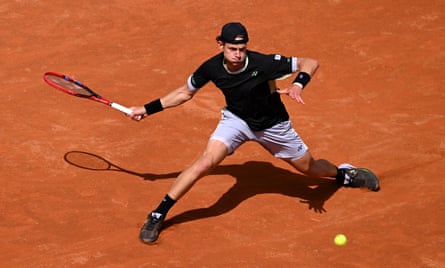
He says: “If you say at school, ‘I want to be top hundred,’ which I had to say to skip lessons at school to go training, everybody is looking at you like, ‘Who do you think you are?’ This goal has been there since I’m conscious about tennis, which is the age of seven. We’re chasing it so hard.”
By qualifying for the main draw in Rome, Bergs crept inside the top 100 of the live rankings but the results from players ranked around him at other tournaments during Rome were not in his favour. On Monday, he rose to 102, a new career high ranking by one place but still two away from the ultimate goal.
Unlike some players, Bergs openly admits that he “constantly” tracks his progress in the live rankings. He believes that chasing such a specific goal is energising: “My team are saying: ‘You should try to put your goals now on another ranking because you’re as good as there.’ I say: ‘No, I just want to enjoy that moment as much as I can when I enter the top 100.’”
after newsletter promotion
For most professionals, reaching the top 100 is a far more realistic goal to fixate on than childhood dreams of winning grand slams. Along with the symbolism of being one of the best players in the world, the top 100 also roughly marks the boundary between the top level of the sport, including grand slam main draws, and the secondary tours of both the ATP and WTA.
It can also prove a supreme mental barrier for many. Jessica Pegula, for example, spent seven years stuck in the 100-200 rankings bracket. After finally breaking the top 100, the confidence and momentum she gained has taken her all the way to the top five, where she has remained for three years: “I just remember [the top 100] being this huge hurdle and then when I did it, I was like ‘OK, that’s it? Like that’s all it took?’ It was hard, but I think it’s one of those things where you have this amazing goal and then once you reach it, you realise, ‘Wow, why was I stressing out so much about that?’” she says.
At the top of the game, breaking into the top 20, top 10, battling for a spot among the top eight in the WTA or ATP finals or a tussle for the world No 1 slot can all be mentally challenging. But many top players say they are so focused on trying to win the biggest titles in the world each week and their personal development that the rankings tend to be secondary. “I want to do well in tournaments,” says Coco Gauff. “The ranking comes with that.”
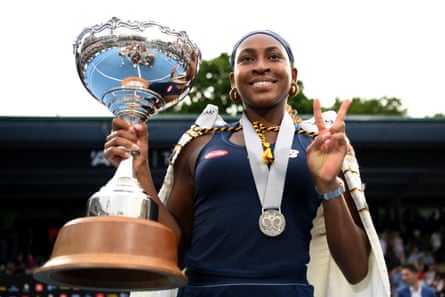
Then there are the select few prodigies who are so good that they never have to worry about their rankings at all. During her teens Iga Swiatek, who is now enjoying her 104th week at No 1 aged 22, would regularly update her social media with screenshots of her ranking. There was never a negative update.
“When I look at it now, it all went so smoothly that I didn’t have a moment where I kind of stopped. Honestly, the first moment where I stopped, and there’s no way of progressing, is kind of right now in the rankings,” says Swiatek casually. “That’s why you need to focus on progressing as a player, not looking at the numbers.”
In recent months, Grigor Dimitrov’s impressive form has guided him back to the top 10 at 33 years old. His reflections on his relationship with his ranking over the years prompt the expression of a sentiment raised by many other players: “Of course, it’s beautiful, it’s nice, it’s great when you’re one of the older guys and you’re still in the top 10,” he says. “But, for me, I don’t want to base my self-worth on winning matches and being a top-10 player.”
As Keys describes how focusing too much on rankings affected her joy for the sport, she also warns of the dangers of them affecting a player’s self-worth. In response to a question about whether it really is that easy for a player’s self-esteem to become attached to the number next to their name, the world No 16 immediately nods vigorously, her eyes closed. “Yes,” she says. “And that’s why we’re all crazy.”

